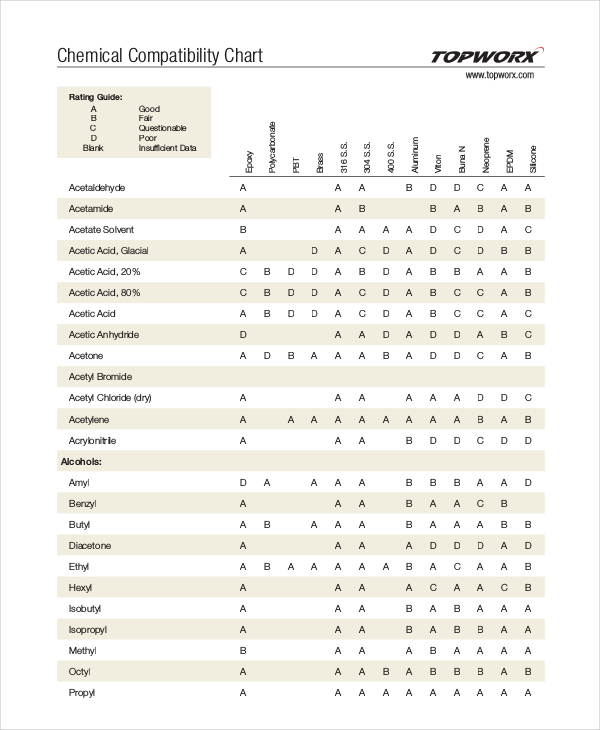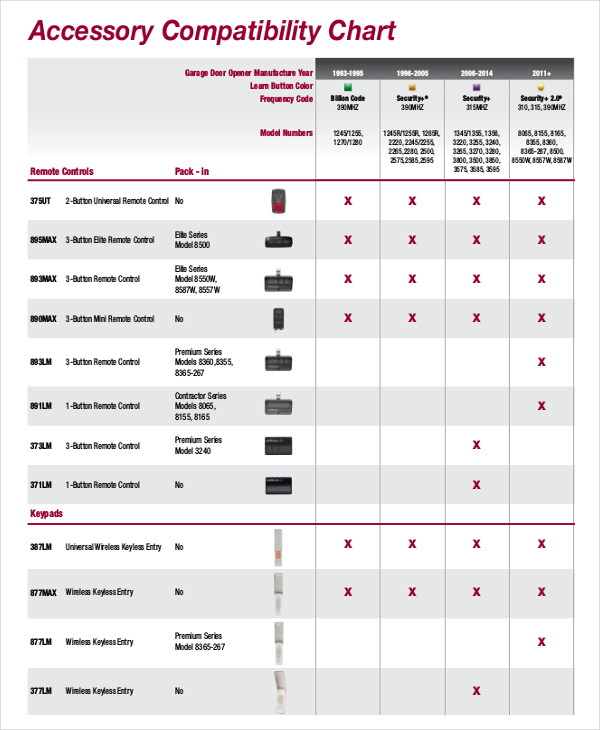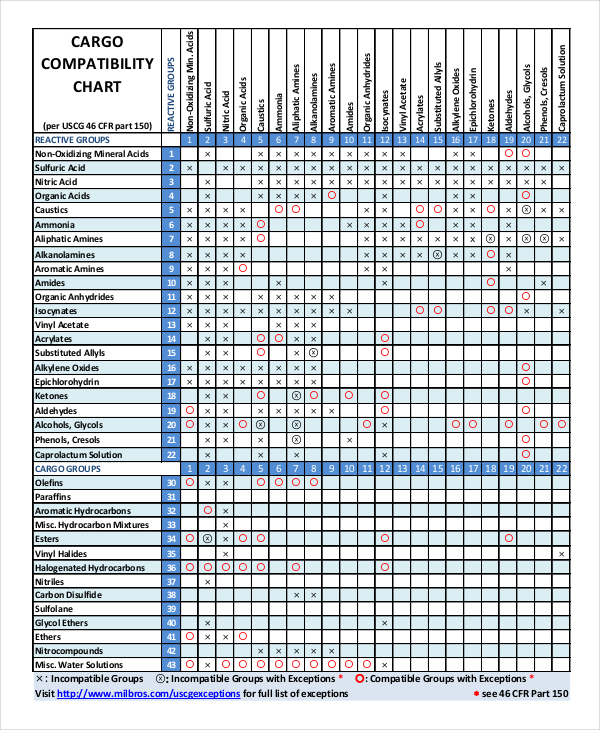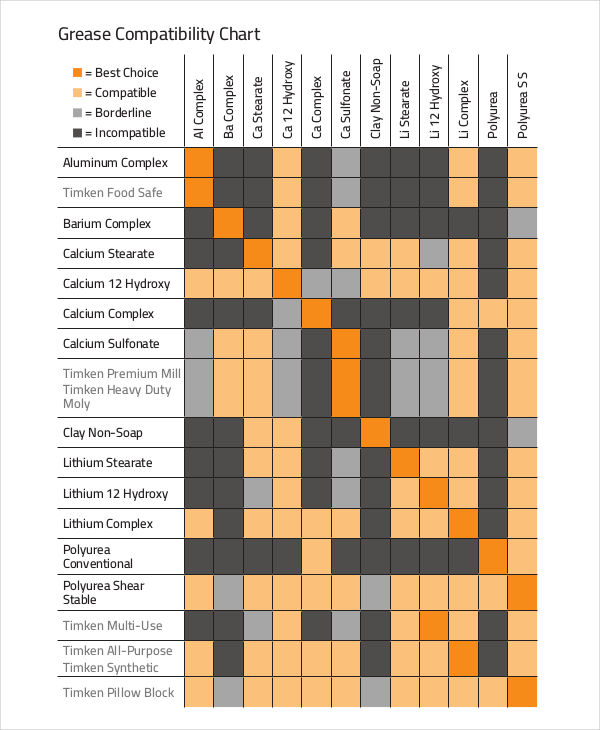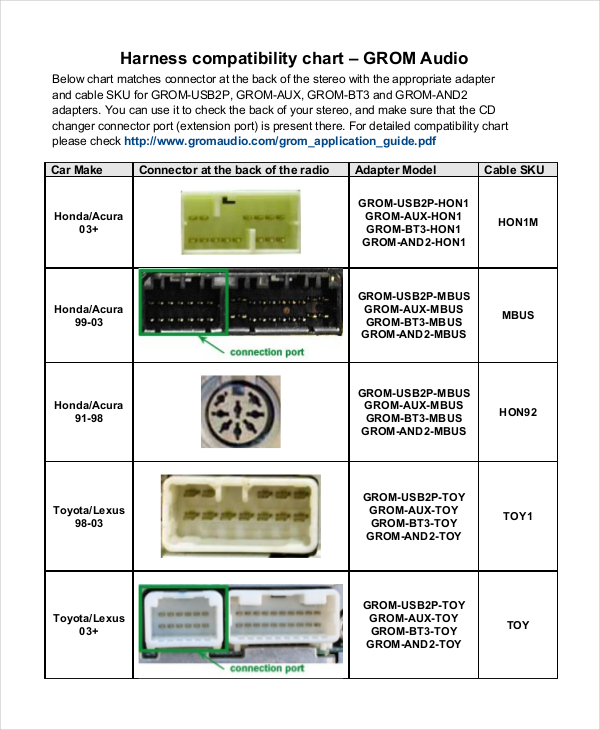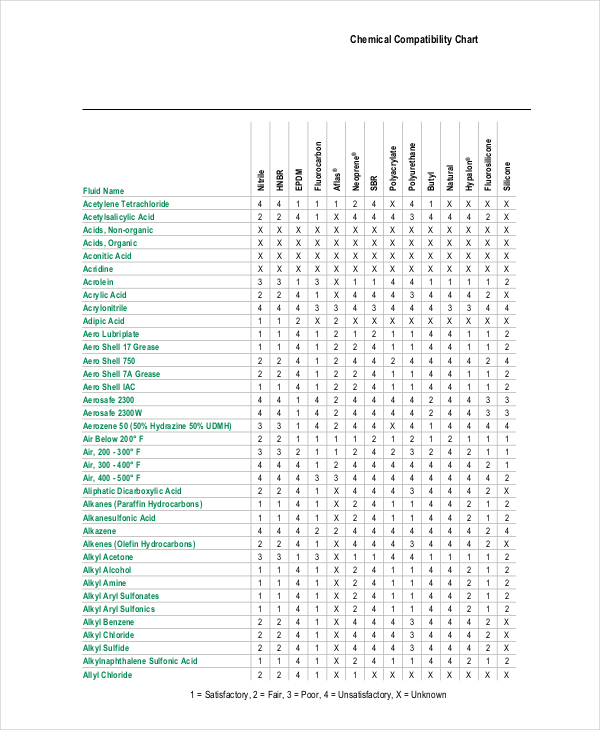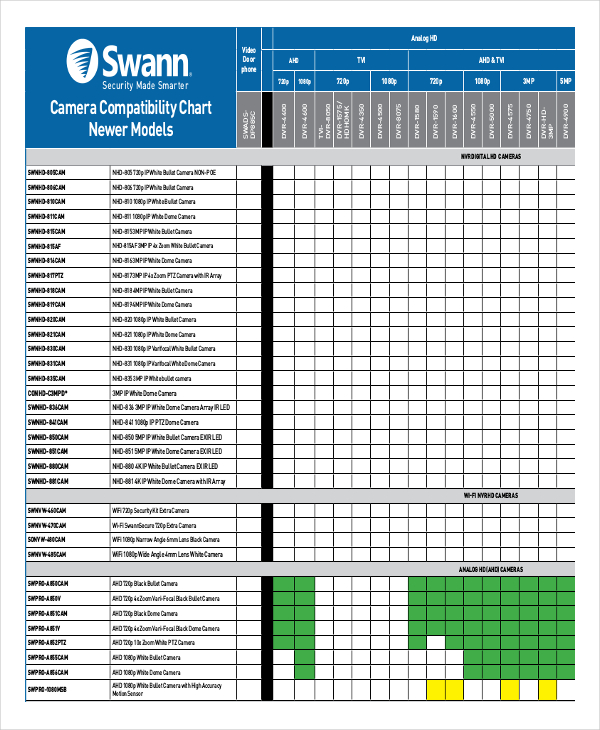6+ Compatibility Chart Examples to Download
Conducting research experiments can be difficult, especially when you don’t know what to expect. It may involve numerous trial and errors to get what you need. There’s also the chance of a negative chemical reaction due to incompatibility. A failure in the process might force you to start over.
To avoid this from happening, different types of sample charts are used for proper analysis and a smooth flow of procedures.
Chemical Compatibility Chart
Accessory Compatibility Example
Cargo Chart Sample
Grease Compatibility Example
What Is a Compatibility Chart?
We define being compatibility as two or more things having the ability to work together without conflict.
- In science, a chemical compatibility chart is used to see whether one chemical is compatible with particular solvents, alcohol, or other chemicals.
- In astrology, on the other hand, we associate compatibility with two entities of different zodiac signs as being destined for love. But of course, that’s a whole other story that people like to believe in.
A compatibility chart, similar to a measurement chart, will make it easier for one to make theoretical decisions rather than mere assumptions. There are other chart examples that also serve a similar purpose.
How to Make a Compatibility Chart
First of all, a compatibility chart needs to be based on facts.
You can’t claim that two or more items are compatible with one another without scientific basis or proof. You would need to conduct your own research and experiments. It needs to be as accurate as possible. Once you have gathered all the information you need, you can now create your chart.
To do so, it’s best to present your data in a table, similar to how a comparison chart presents its data. If you decide to use figures or symbols to indicate compatibility level, provide the appropriate legend for such.
Remember, your compatibility chart should be easily understood by a reader for it to be considered useful.
Harness Compatibility Example
General Compatibility Chart
Camera Compatibility Chart
What Is the Purpose of a Load Compatibility Chart?
We associate load with cargo, which involves carrying a large bulky material over a land or sea area. This load is typically carried by a motor vehicle, a ship, or an aircraft for shipment purposes. Transporting these goods can be dangerous as it can go through extreme climates throughout its journey.
These freight carriers can only support a certain limit of load at a time to avoid any possible accidents caused by overloading. To do so, companies rely on load compatibility charts.
These charts ensure that workers remain informed on what can and cannot be supported by a carrier.
Importance of a Compatibility Chart
For starters, items need to be compatible with one another in order for them to function well.
For instance, a blood donor needs to be the right match for the recipient. Otherwise, the whole transfusion would be a failure. So to ensure that time and resources don’t go to waste, there are strict guidelines to be followed.
Sample charts, specifically a compatibility chart, is used as a reliable basis for such. A compatibility chart is important to lessen the possibility of accidents or problems in a given operation.



